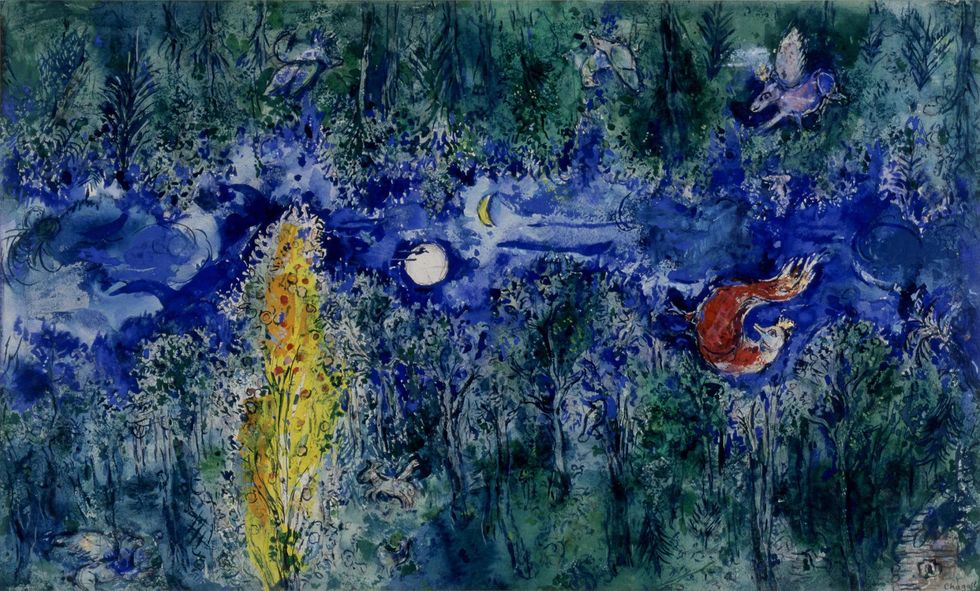Costume Change
Chagall exhibit at the Dallas Museum of Art reveals the artist's obsessions
Marc Chagall (1887-1985), the Russian-born French artist, is probably best known for his stained glass windows and whimsical paintings with poignant, humorous and religious undertones. But Chagall was also commissioned to create costumes and backdrops for theatrical performances throughout the world.
"From the very beginning, Chagall was interested in volume, space and theater," says Olivier Meslay, associate director of curatorial affairs for the Dallas Museum of Art.
Chagall's costumes and set designs are the centerpieces of "Chagall: Beyond Color" at the DMA, which runs February 17-May 26. The costumes were made for Léonide Massine's ballet Aleko, which first premiered in Mexico City and later in New York in 1942. This is the first time in more than 70 years that these treasures have been unearthed in the United States.
Other important works in the show include costume sketches from Igor Stravinsky's 1949 New York ballet The Firebird and sketches of the ceiling for the Paris Opera, which André Malraux requested in 1962. In addition, the exhibition includes Chagall's more familiar paintings, ceramics and sculptures.
Chagall's granddaughter Bella Meyer, who is visiting Dallas for the opening of the exhibit, says that her grandfather met with Massine in 1942 and together they "built the ballet." She says to understand the ballet, "[Chagall's wife] Bella read the plays over and over, and he was always listening to Tchaikovsky."
Unlike most costume designers, Chagall did the bulk of the work himself. His wife and the stage manager went to the markets in Mexico City and brought back the fabric to Chagall. From there, he went to the Mexican dressmakers to help bring his designs to life.
"Chagall painted the costumes himself," Meyer says. She points to one of the dresses in the exhibit and says, "This is similar to how my grandmother dressed," alluding to the fact that Chagall's wife added a personal touch to the work. Mexican motifs are also evident in some of the patterns.
Chagall was known as much for his diligence as for his collaboration. "Chagall sometimes stopped the dancers to add more paint," Mesley says.
Meyer remembers her grandfather often asking for approval — that he was insecure about his work until someone he loved admired it.
"He was obsessed by love," Mesley says.





 Guy Fieri and Oren Salomon Courtesy photo
Guy Fieri and Oren Salomon Courtesy photo  Tom Cruise in Dallas Tribal Cafe
Tom Cruise in Dallas Tribal Cafe  The 2026 FIFA World Cup will be played at AT&T Stadium in Arlington and other venues in the U.S., Mexico, and Canada. Photo courtesy of CONCACAF
The 2026 FIFA World Cup will be played at AT&T Stadium in Arlington and other venues in the U.S., Mexico, and Canada. Photo courtesy of CONCACAF  Hammering Men, 1982 NorthPark Center
Hammering Men, 1982 NorthPark Center